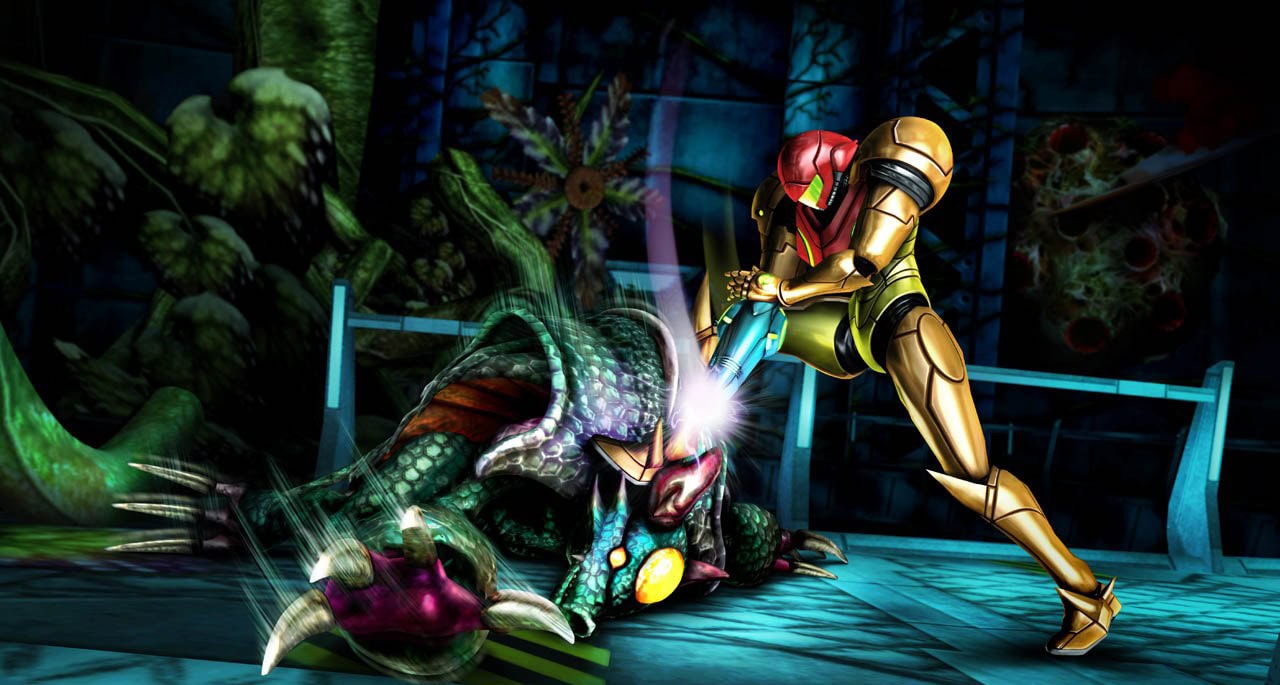With a small number of games to its name, at least in comparison to the Mario and Legend of Zelda franchises, Metroid still feels like fertile ground for new ideas, to the point that one as simple as “This time, Samus is the prey” feels like a minor stroke of genius. That’s more or less Metroid Dread distilled to its essence. But execution is everything, and Mercury Steam’s second crack at the franchise—after 2017’s rock-solid Metroid II remake for the 3DS—has no intention of keeping things that simple.
As Metroid Dread takes place right after 2002’s Metroid Fusion, Samus hasn’t even grappled with the repercussions of her last mission—which ended with her permanently infected with the last trace of Metroid DNA in the universe—before she’s ordered to eradicate the last of Fusion’s X parasites on planet ZDR. Despite having full access to her powers, they’re not enough to take down the massive Chozo warrior that she meets inside the planet’s subterranean facilities and who leaves her for dead, mentally shattered and unable to summon many of her abilities. The way back to the surface and her gunship involves trekking through ZDR’s biomes, as well taking on the rogue, stealth-based operative robots known as E.M.M.I.s.
Samus has never moved with more grace than she does in Metroid Dread, with the jump and slide buttons on the controller further honing Metroid’s traversal system. Here, as you amass power by exploring alien architecture and arcane puzzles, you’ll feel as if you’ve been thrust into an extraterrestrial parkour arena. The precision aiming and parry mechanics from Samus Returns have been refined here into a more organic and thrilling element of combat.
Complementing the stellar portrayal of her physicality and prowess, Samus’s characterization in Metroid Dread represents an incredible course correction after her depiction in 2010’s Metroid: Other M. The typically stoic Samus has a lot more swagger in her step this time around. And while the game doesn’t make room for her to mope around, it frequently finds her taunting her enemies, even expressing fury during particularly difficult battles. And in a scene that’s punctuated with her sole spoken line of dialogue in an alien language, which is deployed to absolute perfection, her reverence for her wayward ancestors is majestic.
If there’s anything one could call a letdown in Metroid Dread, it’s that it doesn’t quite live up to its name. Much of Metroid’s appeal stems from the way that the games conjure a sense of unsettling loneliness, of being abandoned and powerless in unrecognizable worlds. By contrast, Metroid Dread feels a little too safe, even at its most difficult. Until she’s forced to traverse E.M.M.I.-patrolled areas, Samus feels like a master of her domain right out of the gate. While largely and understandably a result of it being less open-ended and more linear than most other titles in the series, Metroid Dread still wants for a core sense of desolation.
The Metroid series has always been steeped in ugly, unnatural death, from the scientist corpses strewn all over Super Metroid’s opening titles, to the umbral nothingscapes of Metroid Prime 2’s Dark Aether, to all those weird, H.R. Giger-esque biological forms from Samus Returns. This game’s frights, if they can even be called that, don’t quite get under the skin, and that’s an impression that’s exacerbated by the score, which trades in the eerie, layered, unknowable soundscapes of prior games for a more distorted, synth-infused ambience. Even after retrieving a cloaking device, even after Samus’s traversal options increase, walking into a zone with an active E.M.M.I. will likely send you into a panic. Just don’t call it dread.
Avoiding an E.M.M.I. is always intense, but there’s a psychological element missing from the experience of taking on these hyper-aware, intelligent, vigilant, and nigh-invulnerable cyborgs, mostly because the E.M.M.I. zones are so compartmentalized. You know what you’re walking into every time, and exactly what you’re looking for in order to escape. The game, then, allows us to take comfort in expectation, which prior games in the series were less likely to provide. And that comfort was harder to come by in prior games in the series.
Which isn’t to say that you’re locked into a path getting to your destination. Indeed, the game’s minor tonal shortcomings are eclipsed by all the ways that it perfects the 2D trappings of Metroid’s mechanics and hands players so much freedom when it comes to exploring its environments. All the while, the game is deliberate and quite devilish about taking that freedom away and picking the right time to dare you to fight to regain it.
This game was reviewed using a retail copy purchased by the reviewer.
Since 2001, we've brought you uncompromising, candid takes on the world of film, music, television, video games, theater, and more. Independently owned and operated publications like Slant have been hit hard in recent years, but we’re committed to keeping our content free and accessible—meaning no paywalls or fees.
If you like what we do, please consider subscribing to our Patreon or making a donation.




